In the dynamic landscape of the tea industry, packaging design emerges as a quintessential facet, serving as the visual ambassador that bridges consumer perception and brand identity. A strategic approach to tea packaging design not only encapsulates the essence of the product but also embodies a meticulous usion of artistry and functionality.
This article embarks on a journey elucidating the nuanced intricacies involved in crafting an impactful tea packaging design, navigating through the labyrinth of market trends, consumer preferences, and brand imperatives. From deciphering the elusive nuances of target demographics to unraveling the symphony of color palettes and typographic choices, every facet of the design process is meticulously orchestrated to resonate harmoniously with the brand ethos and captivate the discerning tea aficionados. Join us as we delve into the realm where aesthetics converge with strategy, unveiling the blueprint for crafting compelling tea packaging designs that transcend mere containers to become emblematic expressions of brand identity and consumer allure.
Understanding the Audience
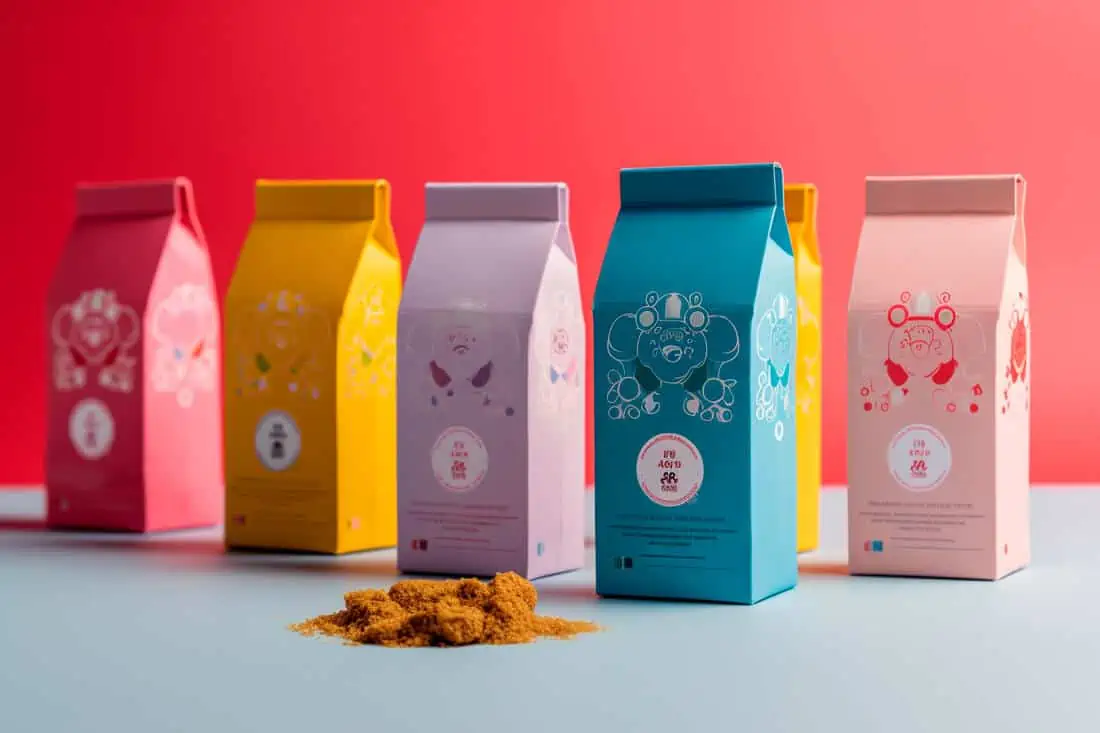
In the realm of tea packaging design, the foundation for innovation and resonance rests upon a profound comprehension of the audience demographic mosaic. Beyond superficial demographics lie the rich veins of psychographics, encapsulating the intricate web of values, aspirations, and cultural nuances that shape consumer perceptions and preferences.
The discerning tea packaging designer embarks on an odyssey to decode these subtleties, employing a diverse array of tools and methodologies to glean insights into the psyche of the target audience. Market segmentation, a cornerstone of this endeavor, facilitates the categorization of consumers into distinct cohorts based on factors such as age, income, geographic location, and consumption habits. However, it is the deeper understanding of psychographic variables—such as lifestyle choices, personality traits, and cultural affiliations—that truly unveils the holistic portrait of the consumer landscape.
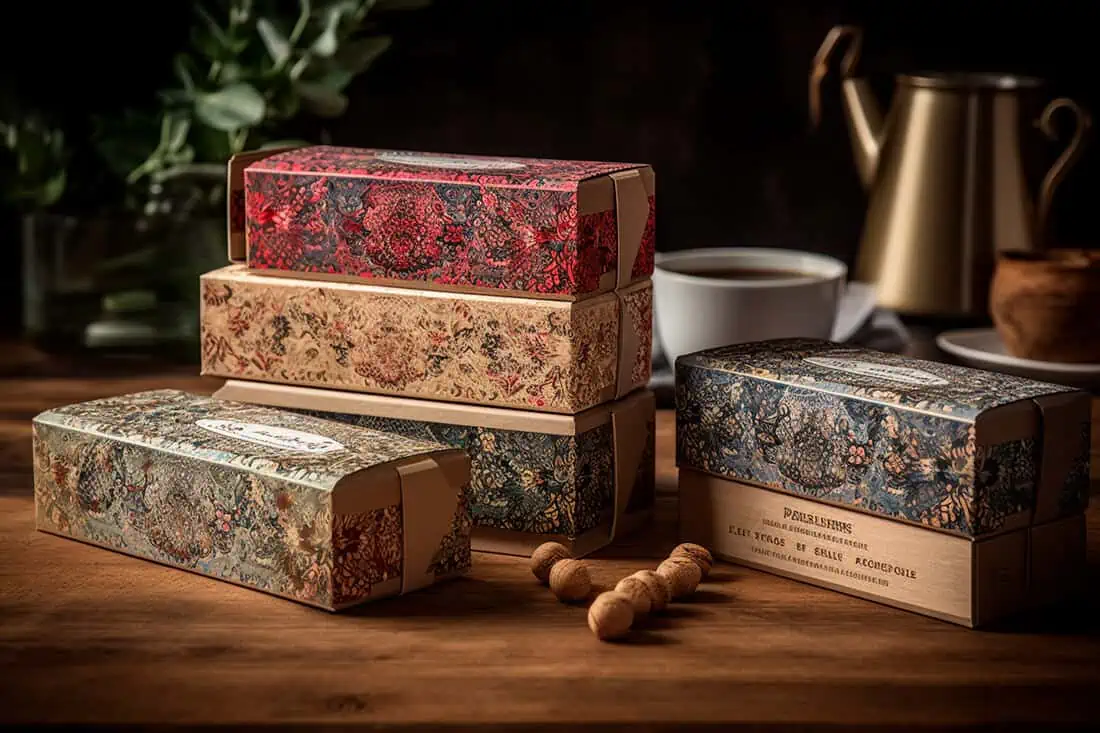
Through the art of persona crafting, the designer transcends the realm of statistical abstractions, breathing life into archetypal representations of the target audience. Each persona becomes a character study, imbued with desires, fears, and aspirations that mirror those of real consumers. By immersing themselves in the intricacies of these personas, designers develop an intuitive understanding of the emotional triggers and aesthetic preferences that resonate with their audience.
Moreover, cultural sensitivity emerges as a paramount consideration in this endeavor. In a globalized world, where tea holds multifaceted cultural significance, packaging designs must navigate the delicate balance between tradition and modernity, paying homage to heritage while remaining relevant to contemporary sensibilities. Whether it be the serene minimalism of Japanese tea ceremonies or the vibrant exuberance of Indian chai culture, the tea packaging designer must deftly weave cultural motifs into their designs, creating narratives that evoke a sense of cultural authenticity and resonance.
At the heart of this process lies the recognition that tea packaging transcends its utilitarian function to become a conduit for storytelling—a vessel for expressing brand values, aspirations, and narratives. By delving deep into the psyche of the audience, designers unlock the transformative potential of tea packaging, crafting designs that not only delight the senses but also forge lasting emotional connections with consumers.
Market Research and Analysis
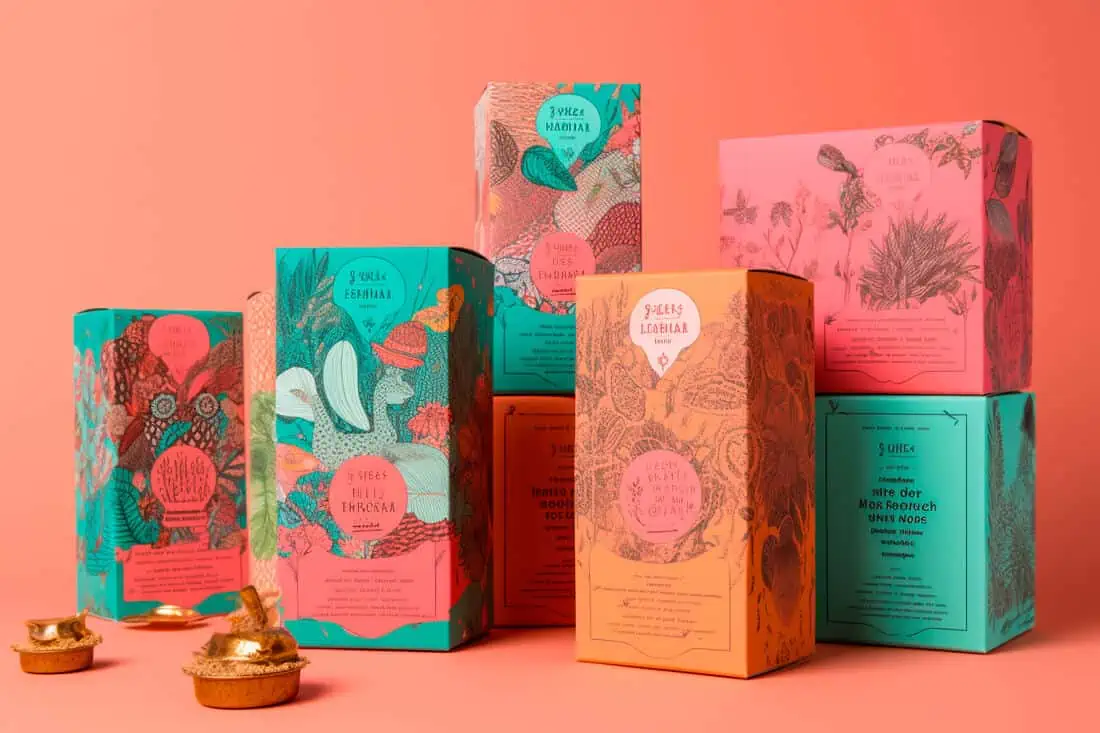
Market research in tea packaging design entails a comprehensive study of industry trends, consumer preferences, and competitor strategies.
- Quantitative Analysis: This involves examining numerical data such as sales figures and demographic information to understand market dynamics and consumer behavior. For instance, analyzing sales data can reveal which tea varieties are popular among different demographics.
- Qualitative Research: Qualitative methods like focus groups and interviews delve into the subjective experiences and perceptions of consumers. These methods help designers uncover deeper insights into emotional and cultural factors influencing purchasing decisions. For example, focus groups with tea enthusiasts can provide valuable feedback on packaging aesthetics and messaging.
- Competitive Analysis: By studying competitors’ packaging designs, designers can identify trends, assess strengths and weaknesses, and find opportunities for differentiation. This analysis helps in understanding market positioning and developing unique packaging solutions.
Overall, thorough research enables designers to create packaging that resonates with target audiences, effectively communicates brand values, and stands out in a competitive market landscape.
Defining Brand Identity
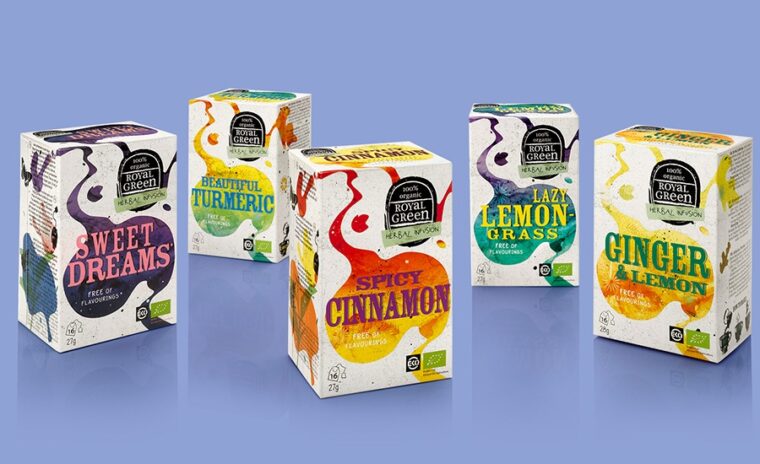
The process of defining brand identity in tea packaging design encapsulates a strategic endeavor to articulate the unique essence, values, and personality traits that distinguish a brand in the marketplace. It involves a meticulous exploration of the brand’s heritage, vision, and market positioning, culminating in the creation of a cohesive narrative that resonates with the target audience.
- Heritage and Legacy: Understanding the brand’s historical roots, traditions, and craftsmanship forms the bedrock of brand identity. By delving into the brand’s legacy, designers unearth the timeless elements that imbue the brand with authenticity and credibility, serving as a guiding compass in the design process.
- Vision and Mission: Clarifying the brand’s vision and mission elucidates its aspirational goals and societal impact. By articulating a compelling vision for the future, designers imbue the brand with purpose and direction, fostering emotional connections with consumers who share similar values and aspirations.
- Values and Proposition: Identifying the core values and unique selling propositions (USPs) distinguishes the brand amidst competitors. Whether it be a commitment to sustainability, quality craftsmanship, or cultural authenticity, these values serve as the cornerstone of brand identity, informing design decisions and resonating with consumers on a deeper level.
- Target Audience Alignment: Aligning brand identity with the preferences and aspirations of the target audience ensures relevance and resonance. By understanding the demographics, psychographics, and lifestyle preferences of consumers, designers tailor brand identity elements such as aesthetics, messaging, and packaging design to evoke emotional connections and foster brand loyalty.
- Consistency and Coherence: Upholding consistency and coherence across all brand touchpoints reinforces brand identity and fosters brand recognition. From packaging design to marketing communications, maintaining a unified visual language, tone of voice, and brand imagery ensures a cohesive brand experience that instills trust and loyalty among consumers.
In essence, the process of defining brand identity in tea packaging design transcends aesthetic considerations to become a strategic exercise in storytelling and differentiation. By distilling the brand’s essence into tangible design elements, designers create packaging that not only encapsulates the brand’s values and aspirations but also resonates with consumers on a profound emotional level.
Design Development
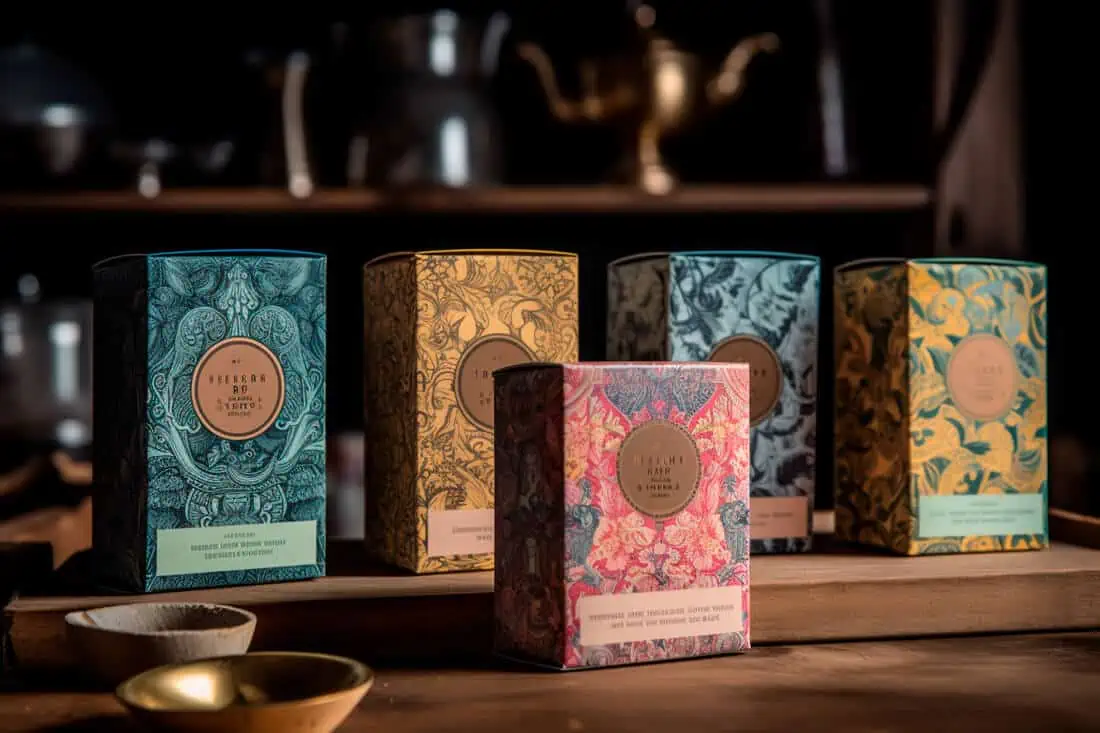
Design development for tea packaging involves a strategic process of translating brand identity and consumer insights into visually appealing and functional packaging solutions. This includes:
- Conceptualization: Generating ideas based on market research and brand identity, exploring themes, colors, typography, and imagery.
- Visual Exploration: Refining concepts through visual experimentation using mood boards, sketches, and digital mock-ups to enhance visual appeal.
- Material Selection: Choosing sustainable materials that align with brand values and enhance packaging experience.
- Typography and Graphics: Selecting typefaces and incorporating graphic elements to convey brand messaging and enhance visual appeal.
- Structural Design: Considering packaging size, shape, and functionality to ensure effectiveness and usability.
- Iterative Refinement: Continuously refining designs based on feedback and testing to meet aesthetic and functional requirements.
Execution and Testing
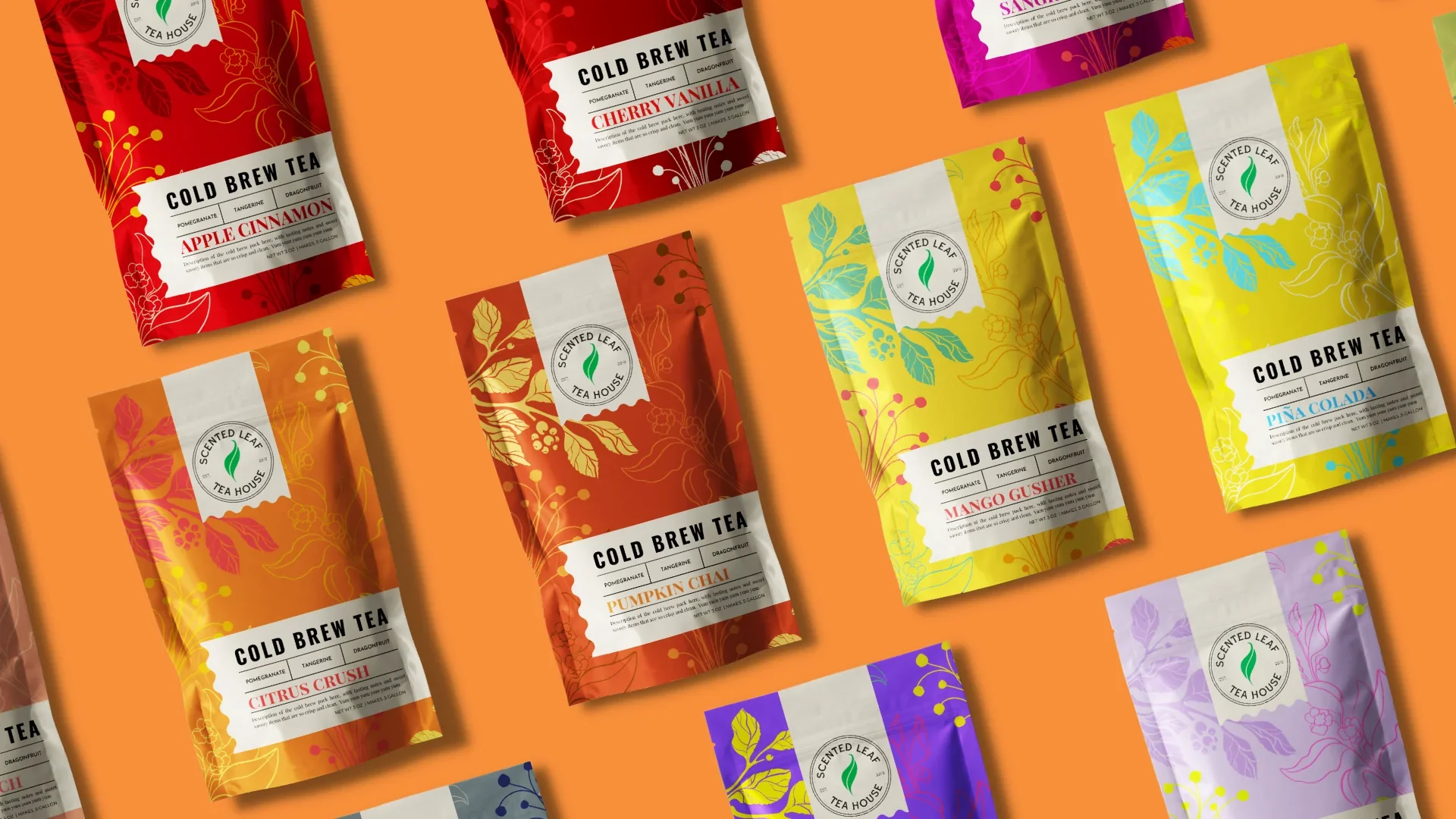
The stage of execution and testing in tea packaging design involves bringing the conceptualized design to fruition and subjecting it to rigorous evaluation to ensure its effectiveness and alignment with predefined objectives.
- Prototype Development: This phase entails translating the finalized design concepts into tangible prototypes. Skilled craftsmen and production experts utilize advanced manufacturing techniques and state-of-the-art equipment to produce prototype iterations that accurately represent the intended final product.
- Usability Testing: Prototypes undergo comprehensive usability testing to assess their functionality, ergonomics, and user experience. This involves soliciting feedback from a diverse pool of stakeholders, including consumers, industry experts, and internal teams, through focus groups, surveys, and observational studies.
- Aesthetic Evaluation: Concurrently, the aesthetic aspects of the packaging design are scrutinized to ensure alignment with brand identity and consumer preferences. Designers assess factors such as visual appeal, coherence with brand messaging, and adherence to design principles to gauge the effectiveness of the design in eliciting desired emotional responses from the target audience.
- Durability and Sustainability Assessment: Packaging prototypes are subjected to rigorous durability and sustainability tests to evaluate their resilience to environmental factors, transportation hazards, and consumer handling. This involves simulating real-world conditions and assessing the packaging’s ability to maintain structural integrity while minimizing environmental impact.
- Compliance Verification: Packaging designs undergo meticulous scrutiny to ensure compliance with regulatory standards, industry guidelines, and brand specifications. Designers collaborate with legal experts and regulatory authorities to navigate complex compliance requirements and address any potential issues proactively.
- Iterative Refinement: Feedback gathered from testing sessions serves as valuable insights for iterative refinement of the packaging design. Designers leverage this feedback to identify areas for improvement, fine-tune design elements, and optimize the packaging’s overall performance and impact.
By meticulously executing the design process and subjecting the packaging to comprehensive testing protocols, designers can ensure that the final product not only meets the highest standards of quality and functionality but also resonates with consumers on a profound level, fostering brand loyalty and driving commercial success.
